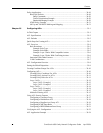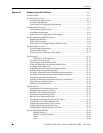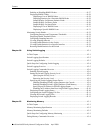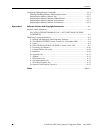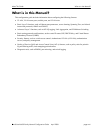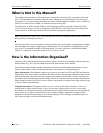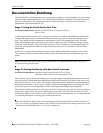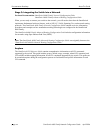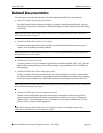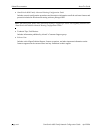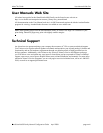
What is Not in this Manual? About This Guide
page xxviii OmniSwitch 6600 Family Network Configuration Guide April 2006
What is Not in this Manual?
The configuration procedures in this manual use Command Line Interface (CLI) commands in all exam-
ples. CLI commands are text-based commands used to manage the switch through serial (console port)
connections or via Telnet sessions. Procedures for other switch management methods, such as web-based
(WebView or OmniVista) or SNMP, are outside the scope of this guide.
For information on WebView and SNMP switch management methods consult the OmniSwitch 6600
Family Switch Management Guide. Information on using WebView and OmniVista can be found in the
context-sensitive on-line help available with those network management applications.
Note. The OmniSwitch 6600 Family Switch Management Guide was originally known as the “OmniSwitch
6624/6648 Switch Management Guide.”
This guide provides overview material on software features, how-to procedures, and application examples
that will enable you to begin configuring your OmniSwitch. It is not intended as a comprehensive refer-
ence to all CLI commands available in the OmniSwitch. For such a reference to all OmniSwitch 6600
Family CLI commands, consult the OmniSwitch CLI Reference Guide.
How is the Information Organized?
Chapters in this guide are broken down by software feature. The titles of each chapter include protocol or
features names (e.g., 802.1Q) with which most network professionals will be familiar.
Each software feature chapter includes sections that will satisfy the information requirements of casual
readers, rushed readers, serious detail-oriented readers, advanced users, and beginning users.
Quick Information. Most chapters include a specifications table that lists RFCs and IEEE specifications
supported by the software feature. In addition, this table includes other pertinent information such as mini-
mum and maximum values and sub-feature support. Most chapters also include a defaults table that lists
the default values for important parameters along with the CLI command used to configure the parameter.
Many chapters include a Quick Steps section, which is a procedure covering the basic steps required to get
a software feature up and running.
In-Depth Information. All chapters include overview sections on the software feature as well as on
selected topics of that software feature. Topical sections may often lead into procedure sections that
describe how to configure the feature just described. Serious readers and advanced users will also find the
many application examples, located near the end of chapters, helpful. Application examples include
diagrams of real networks and then provide solutions using the CLI to configure a particular feature, or
more than one feature, within the illustrated network.



